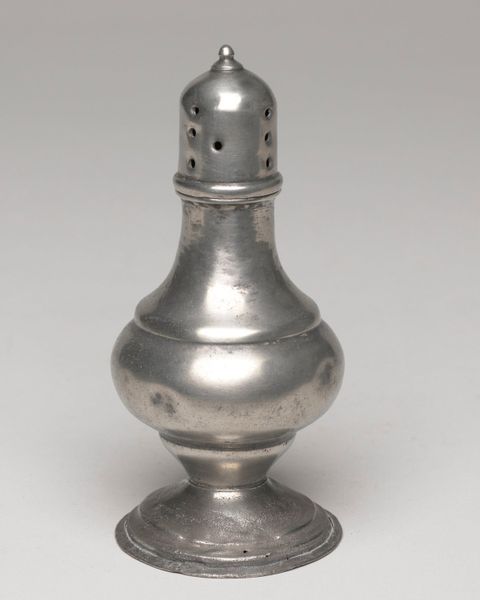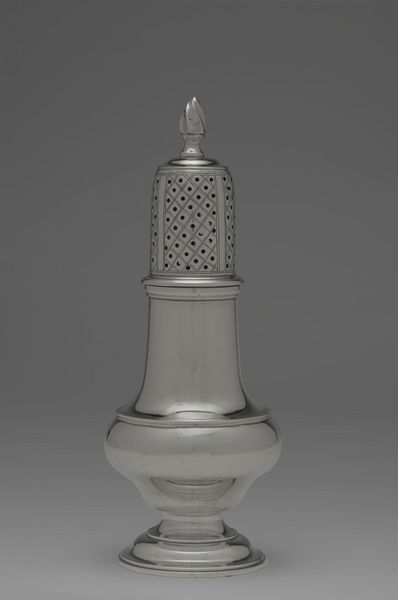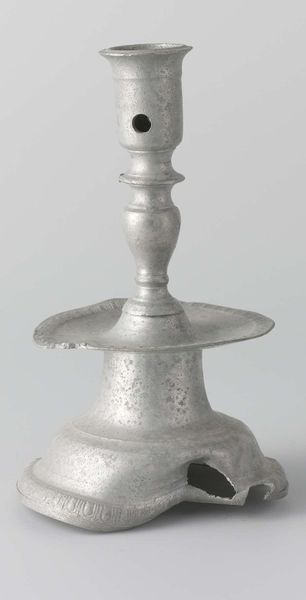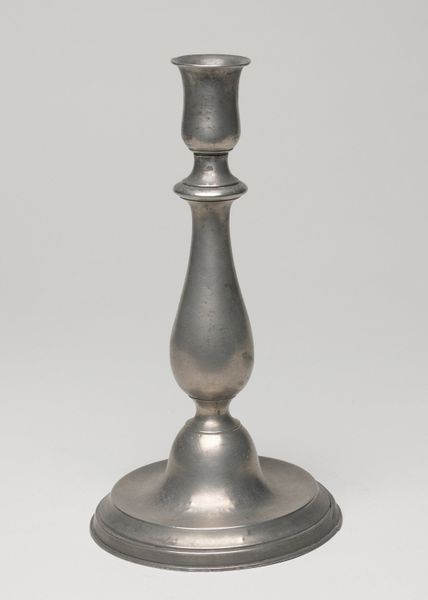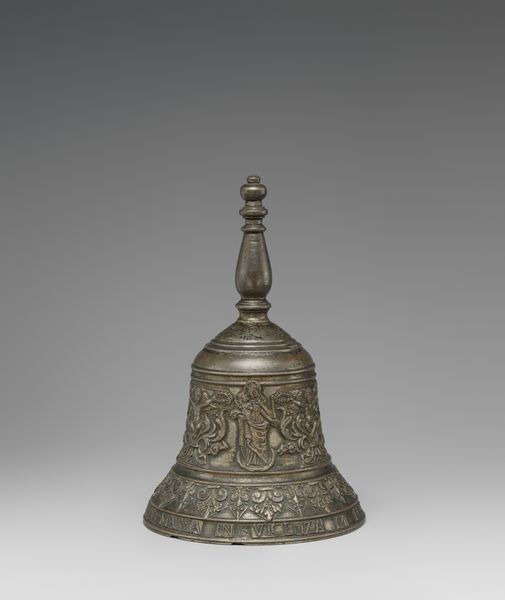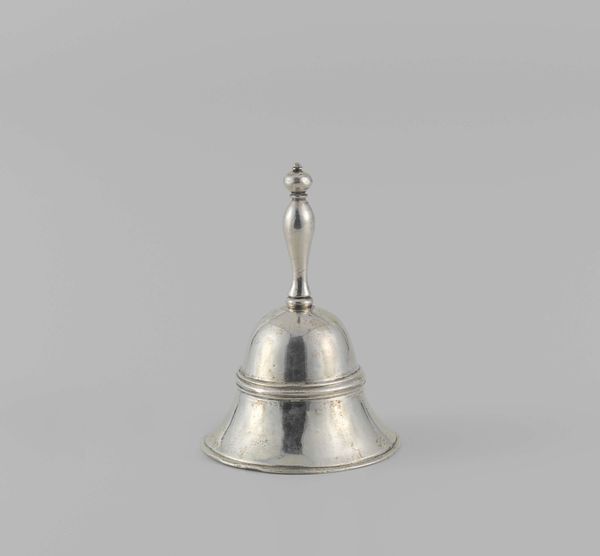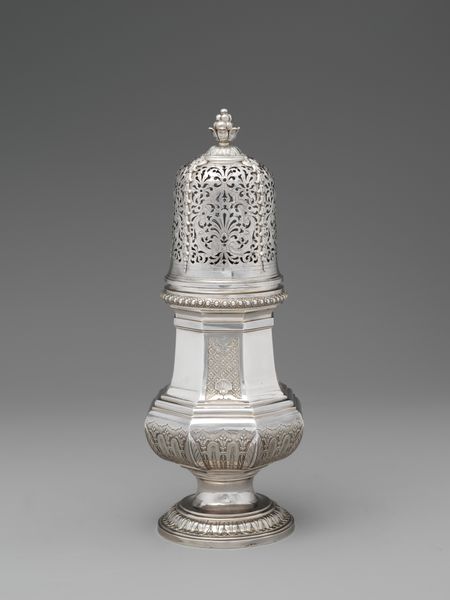
metal, sculpture
#
baroque
#
metal
#
mannerism
#
sculpture
Dimensions: height 22.4 cm, diameter 4.5 cm, diameter 7 cm, diameter 10.5 cm
Copyright: Rijks Museum: Open Domain
Editor: Here we have "Merchandise," a metal sculpture from around 1590-1596, created by an anonymous artist. Its worn appearance and intricate form makes me think of something that’s been passed down through generations. It’s simultaneously simple, almost crude in its execution, and exquisitely designed. What strikes you most about it? Curator: That 'worn' feel you mentioned speaks volumes! It reminds me how objects, unlike paintings hanging pristine on walls, have lived lives, witnessed whispers and shouts, and maybe even travelled across oceans. With a name like "Merchandise", I see more than just metal; I see echoes of bustling markets. Can't you almost hear the haggling, the scales creaking, and the dreams attached to this humble object changing hands? Editor: Absolutely! And, despite its utilitarian name and the presumed original use, there is such art to the design. The lines and shaping are so refined. Curator: Yes, though I imagine its elegance, almost bordering on Baroque flourish, might have surprised its original owners, or rather they could expect some style in it. Back then, even everyday objects held a sense of occasion, a celebration of the craft itself. It's like they poured a little bit of magic into the mundane. Makes you wonder what purpose this 'merchandise' served and whose hands held it, doesn’t it? Was it some sort of spice container? Editor: That’s a fantastic point. Thinking about who made it, what they intended for it, and what its story could be, has changed how I look at it entirely. Thanks for giving me some exciting perspectives. Curator: My pleasure! Hopefully the museum store sells nice little reproductions. Now wouldn't that be fun?
Comments
rijksmuseum about 2 years ago
⋮
Among the merchandise intended for the Asian market were pewter salt-cellars and a splendidly ornamented ewer. The pewter medallions in wooden frames were meant to serve as wall decorations.
Join the conversation
Join millions of artists and users on Artera today and experience the ultimate creative platform.
